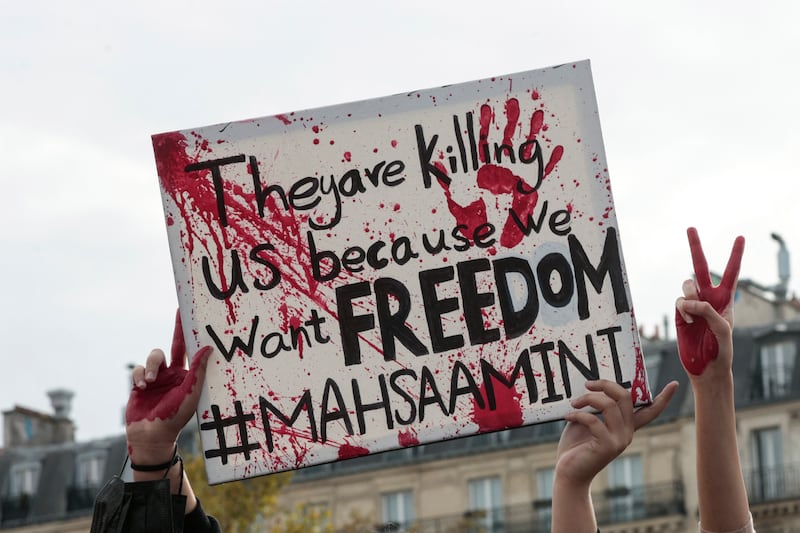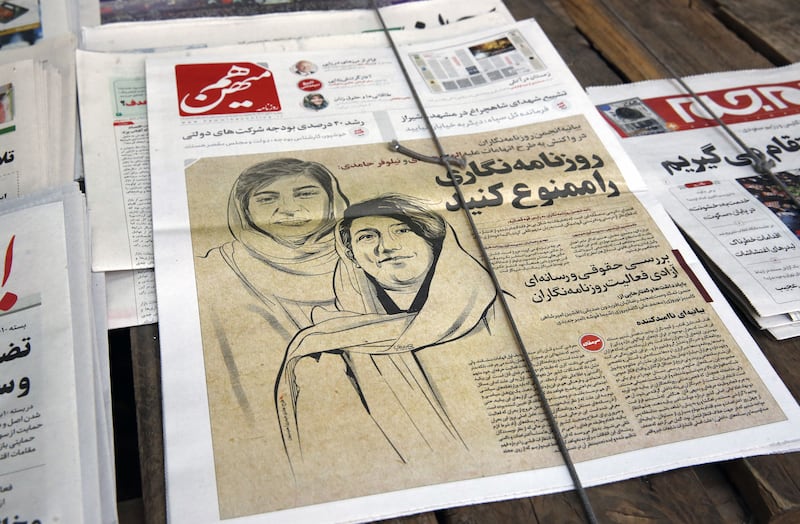Iranian students defied warnings from the feared Revolutionary Guards and Basij militia that nationwide protests must end by Sunday, prompting a fierce response from riot police and militia, videos on social media showed.
Iranians from all walks of life have been protesting since the death of 22-year-old Mahsa Amini in the custody of the morality police after she was arrested for attire deemed inappropriate.
What began as outrage over Amini’s death on September 16th evolved into one of the toughest challenges for clerical rulers since the 1979 revolution, with some protesters calling for the death of supreme leader Ayatollah Ali Khamenei.
[ Iran protests: Thousands gather to mourn girl killed in crackdownsOpens in new window ]
Iran's Revolutionary Guards top commander warned protesters that Saturday would be their last day of taking to the streets, the harshest warning yet by Iranian authorities.
Holocaust, the 1978 TV series that helped Germany break the silence about its past
Auschwitz survivors to visit home of former camp commander Rudolf Höss
Trump’s Panama Canal seizure threat revives memories of 1989 US invasion
Trump’s blunderbuss strategies on climate and energy may backfire in ways he has not envisaged
Nevertheless, videos on social media, unverifiable by Reuters, showed confrontations between students and riot police and Basij forces in universities all over Iran.
Security forces tried to block students inside university buildings, firing tear gas and in some cases beating protesters with sticks, while the students pushed back, with some chanting “dishonoured Basij get lost” and “death to Khamenei”.

The Guards and its affiliated Basij force have crushed dissent in the past. They said on Sunday, “seditionists” were insulting them at universities and in the streets, and warned they may use more force if the antigovernment unrest continued.
“So far, Basijis have shown restraint and they have been patient,” the head of the Revolutionary Guards in the Khorasan Junubi province, brigadier general Mohammadreza Mahdavi, was quoted as saying by the state news agency IRNA.
"But it will get out of our control if the situation continues."
HENGAW, an independent organisation that covers human rights violations in Iran's Kurdistan, where Amini was from, said security forces opened fire at female students in a university at Sanandaj city.
[ Iran Protests: ‘The government do their best to brainwash you’Opens in new window ]
More than 300 Iranian journalists demanded the release of two colleagues jailed for their coverage of Amini in a statement published by the Iranian Etemad and other newspapers on Sunday.
Niloofar Hamedi took a photo of Amini’s parents hugging each other in a Tehran hospital where their daughter was lying in a coma.
The image, which Hamedi posted on Twitter, was the first signal to the world that all was not well with Amini, who had been detained three days earlier by Iran's morality police for what they deemed inappropriate dress.
Elaheh Mohammadi covered Amini's funeral in her Kurdish hometown Saqez, where the protests began. A joint statement released by Iran’s intelligence ministry and the intelligence organisation of the Revolutionary Guards on Friday had accused Hamedi and Mohammadi of being CIA foreign agents.
The arrests match an official narrative that Iran’s arch-enemies the United States, Israel and other Western powers and their local agents are behind the unrest and are determined to destabilise the country.

At least 40 journalists have been detained in the past six weeks, according to rights groups, and the number is growing.
Students and women have played a prominent role in the unrest, burning their veils as crowds call for the fall of the Islamic Republic, which came to power in 1979.
An official said on Sunday the establishment had no plan to retreat from compulsory veiling but should be "wise" about enforcement.
“Removing the veil is against our law and this headquarters will not retreat from its position,” Ali Khanmohammadi, the spokesman of Iran’s headquarters for “promoting virtue and preventing vice” told the Khabaronline website.
"However, our actions should be wise to avoid giving enemies a pretext to use it against us."
[ How two teenagers became the new faces of Iran’s protestsOpens in new window ]
The apparent hint at compromise is unlikely to appease the protesters, most of whose demands have moved beyond dress code changes to calls for an end to clerical rule.
In a further apparent bid to defuse the situation, parliament speaker Mohammad Baqer Qalibaf said people were right to call for change and their demands would be met if they distanced themselves from the “rioters” taking to the streets.
“We consider the protests to be not only correct and the cause of progress, but we also believe that these social movements will change policies and decisions, provided that they are separated from violent people, criminals and separatists,” he said, using terms officials typically use for the protesters. – Reuters













